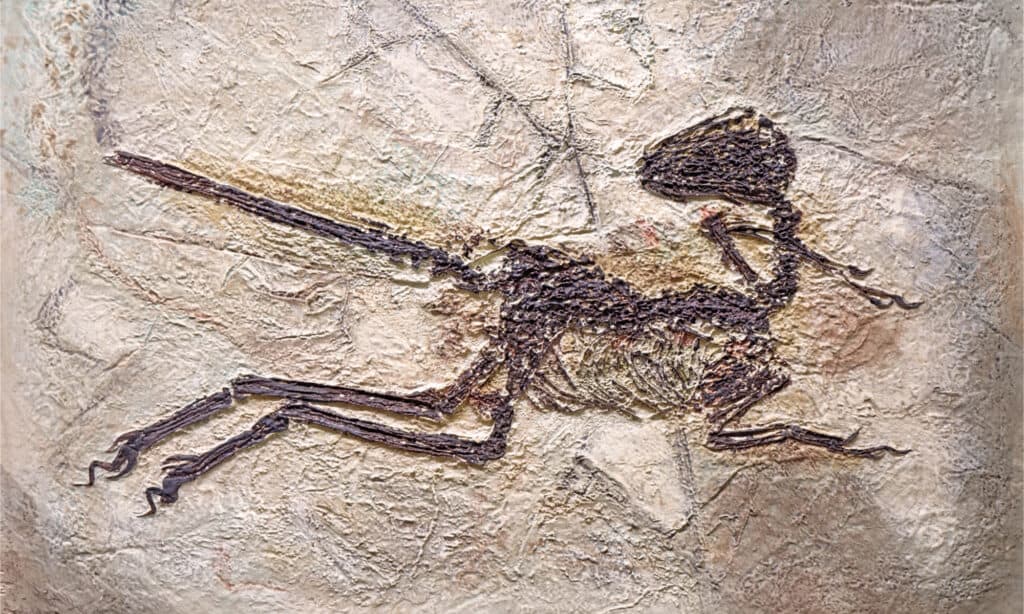In the newest Jurassic World movie, viewers were introduced to a total of ten new dinosaurs. Of those ten, two stand out as some of the main “antagonists,” although dinosaurs don’t really have bad intentions as we think of them. Therizinosaurus is probably one of the most interesting dinosaurs we’ve ever seen in the films, but was it even accurate in the film? Today, we are going to meet Therizinosaurus, Jurassic Park’s newest “nightmare predator.”
Was Therizinosaurus in Jurassic World Dominion in the Movies Accurate to Real Life?

Therizinosaurus: Jurassic World Dominion
Which dinosaur was Therizinosaurus? Jurassic World Dominion’s feathered antagonist is first seen when Claire (Bryce Dallas Howard) is ejected from the airplane and lands in the middle of the Biosyn Sanctuary, located in the middle of the Dolomite Mountains in Italy. As she is sitting in her airplane seat and is stuck, a mysterious shape begins to form behind her. As we are about to find out, this shape is Therizinosaurus.
Fully revealed in the film, Therizinosaurus was a partially feathered dinosaur with massive claws, a sharp beak, and a body similar to a large raptor. Altogether, this image of the predator is quite terrifying! Viewers got to see deer fall to its razor-sharp claws in Jurassic World Dominion. Therizinosaurus was also depicted as being quite territorial. Once it realizes that Claire is in its space, it attempts to find and kill her. Only through hiding in a small pool was she able to escape with her life. In the final moment of that scene in Jurassic World Dominion, Therizinosaurus hovers close to Claire, its beak mere inches away. If the movie is accurate, the dinosaur was truly a nightmare predator!
Therizinosaurus: In real life
In spite of the riveting scenes contained in Jurassic World, Therizinosaurus’ depiction was quite inaccurate. In real life, the dinosaur likely stood 13-16 feet tall and measured 30-33 feet from tip to tail, pretty close to what we see in the movie. Additionally, in Jurassic World, Therizinosaurus appears as a feathered dinosaur. Although scientists don’t have direct evidence that Therizinosaurus was feathered, it isn’t unreasonable to assume it had at least some feathered portions of its body. Aside from these two things (size and feathers), most of the remainder of Therizinosaurus is inaccurate.
In real life, Therizinosaurus was a slow-moving herbivore that had long claws but only used them to pull leaves closer to its mouth. Its beak wasn’t designed to tear flesh but was instead used to process plant material. In all actuality, Therizinosaurus wasn’t a nightmare predator but was instead a scary-looking sloth-mimic that couldn’t have fought large carnivores, even if it wanted to.
How big was Therizinosaurus?

| Therizinosaurus | Tyrannosaurus Rex | Giganotosaurus | |
|---|---|---|---|
| Length | 33 feet | 40 feet | 39-43 feet |
| Weight | 5 tons | 14 tons | 4.2-13.8 tons |
In real life, Therizinosaurus was actually quite a large dinosaur, especially for its group. Therizinosaurus was a therizinosaurid, a group of dinosaurs that are known for being well-built and having long arms and claws. In fact, they appeared extremely similar to the now-extinct ground sloth. Therizinosaurus was probably the largest of all therizinosaurids. Most measurements place Therizinosaurus at 33 feet long, weighing 5 tons, and standing 15 feet tall.
What were the claws actually used for?

©Herschel Hoffmeyer/Shutterstock.com
In the movie, Therizinosaurus had insanely sharp claws that closely resembled the adamantium claws that Wolverine displays in the X-Men movies. At one point, Therizinosaurus shoves them through Giganotosaurus without any seeming effort, showing just how sharp they were.
In real life, the claws weren’t anything like swords. In fact, they probably weren’t even used for defense. Therizinosaurus was a grazing animal that needed access to the tallest trees in order to compete for food with other tall dinosaurs. Using its long neck, Therizinosaurus could eat tender leaves and then pull other branches close with its long, hooked unguals (claws). The unguals probably weren’t very sharp and wouldn’t have been good in a fight.
Was Therizinosaurus a predator?
In prehistoric times, Therizinosaurus would have exclusively eaten plant material, making it a herbivore. As a result, Therizinosaurus would not have been a predator. Also, it isn’t likely that it was even aggressive like how we see in the movie. Even more, its beak likely had a reduced bite force that was more suited to ripping vegetation than ripping flesh. Overall, Therizinosaurus wasn’t a predator of anything besides the leaves on a tree.
Where did Therizinosaurus live?
As a grazer, Therizinosaurus would have needed plant material in order to survive. Although it was found in modern-day deserts, the places Therizinosaurus roamed during its time were covered with thick forests. During the fossil discovery, petrified wood was also found, showing that the region was covered in extremely extensive woodland with winding rivers and canopied forests. Therizinosaurus likely foraged near water, judging by the places where its fossil remains are often discovered.
Where was Therizinosaurus discovered?

Therizinosaurus was first discovered in the Gobi Desert in Mongolia.
©Mark Brandon/Shutterstock.com
The first Therizinosaurus fossils were discovered in 1948 in the Nemegt Formation in the Gobi Desert of Southwestern Mongolia. It was found during a paleontological expedition headed up by the USSR Acadamy of Sciences, which was looking for new fossil findings. When the remains were discovered, the name Therizinosaurus was given, meaning “scythed lizard,” owing to its extremely long claws.
The photo featured at the top of this post is © Herschel Hoffmeyer/Shutterstock.com
Thank you for reading! Have some feedback for us? Contact the AZ Animals editorial team.






